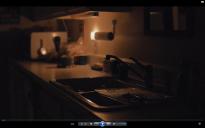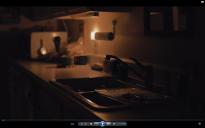
It allows to keep PV going, with more focus towards AI, but keeping be one of the few truly independent places.
-
Site: http://www.neatvideo.com/
GH3 profiles - http://www.personal-view.com/talks/discussion/1003/gh2-neat-video-noise-profiles
Does anyone have a preset or know of an ideal setting to deal with footage screwed by the GH2 ISO noise-bug?
I just finished editing a project I filmed before I knew of the extent of the bug and have a lot of affected scenes shot at ISO 640.
I am not partial to NeatVideo so any other software/techniques ( @shian perhaps in CG? ) would be appreciated. Let me be clear that I already have my footage and reshooting is NOT an option.
-
yes it does.
-
Does the new Neat Video V4 work with Resolve 12?
-
@Psyco I have the ofx version with resolve, and it works great. Just depends on how you do your workflow.
-
Using a BMPCC to its full dynamic range potential does mean to use some sort of noise reduction. As recomended by pretty much everybody, NeatVideo is the way to go.
So, there are two choices:
Get NeatVideo OFX version and use it directly in Davinci Resolve when converting the RAW footage and doing the first colour corrections.
Get NeatVideo AE version and do the noise reduction in AfterEffects after the footage has been gone throu Resolve.
Doing the noise removal directly in Resolve gives better results, but the OFX version of NeatVideo is much more expensive. Is it worth the extra money for the OFX version? Has anybody compared the two alternatives?
-
ISO 400 on a GH3, zoomed way in on footage (unknown %)
1 - original
2 - shadows lifted
3 - neat video + sharpening
 1.jpg1041 x 620 - 49K
1.jpg1041 x 620 - 49K
 2.jpg1041 x 619 - 94K
2.jpg1041 x 619 - 94K
 3.jpg1041 x 620 - 39K
3.jpg1041 x 620 - 39K -
Having some fun with this wizardy. This is with an old version, too. This is a GH3 shot extremely underexposed and then pulled up in post so that the shadows weren't completely black. Probably could have done even better if I had separated the color channels and done each individually. Absolute wizardry.

 Before_Kitchen.jpg1680 x 1050 - 263K
Before_Kitchen.jpg1680 x 1050 - 263K
 After_Kitchen.jpg1680 x 1050 - 215K
After_Kitchen.jpg1680 x 1050 - 215K -
@SuperSet , what a name! First I try to stay away from this fucker most possible, he's a slow eater :P
Then when it has to be; not only in low light / high iso, also depends on light-background quality and camera-lenses used; I really try to keep it to the minimum possible. In the last video I used it there was a lot of salt and fine grain which neatvideo voraciously wanted to stuff away, I tried a color channel separation and went harder on the chroma noise... it worked, more or less, even with sensitivity and effect to the bare minimum some salt got spoiled (bad luck?). Unfortunately I didn't know Matthew technique - first video above.
Here -5 ºC too, je jeFinally a friend insisted I should denoise after grading but, though my tests show he's right, normally at this point of the game I have no time for "delicacies" (pushing deadlines) and actually prefer a nice fat orgasmic grain, film scan or like so
@tinyrobot If you doing the denoise-dither process right, it could be a compression problem; have a look here - Best HD settings for Vimeo and then here - Handbrake presets and other x264 settings to see if it helps
-
I'm following the vimeo video Vitaliy posted above using NeatVideo, but I see patches of banding or posterizing in shadow areas. I did add a little noise (.4), but doesn't seem to make a difference. What am I doing wrong? How can I fix this?
Also, I'm getting "External Error" in PPro sometimes and I can't go to the NeatVideo setting window.
-
Question for the GH3 guys, under what conditions are you using Neat Video? Is it only during low light or are you applying it globally? Like most folks, I'm shooting at NR -5 picture profile so looking for input from fellow GH3 users. Thanks.
-
Even if you're not using neat video or premiere, it's totally worth watching this 3 mins of Matthew lighting verbosity WHILE using a very interesting technique for filtering noise reduction with a matte mask, thank @LongJohnSilver for pointing the spotlight ;-)
-
Not bad. I used to do that in photoshop to blur out web compression then add grain to sharpen it back up. Also used to do something similar to DV footage by doubling the layer blurring it out, and setting it to "add" to fix both noise and exposure.... Then adding grain to mask the blur. 10 bit is fine, but that's a really light grade. If yer going heavy better go 32. Or you'll get banding.
-
@Vitaliy_Kiselev - Great video. I'd love to get @shian 's opinion of the 10bit up conversion used here.
-
NeatVideo is great, hard to balance noise removal and making your footage not too soft. I usually have problems with skin.
-
Workflow for finishing 8bit HDSLR footage and applying film grain
-
Just bought Neat Video for AE last night, and it soundly crushes Denoiser II. The temporal NR is the key. I was able to eliminate sooo much noise in an iDynamic shot at ISO 160 where the dark parts looked like they were at 3200. Easily worth the $99, and renders infinitely faster than Denoiser.
-
I have both Neat Video and Red Giant Denoiser and have found that NV is consistently better. It's not something I would expect to happen in real time as it is CPU intensive and needs rendering. I have often wondered if I should shoot some flat wall in low light to give me a noise profile that I could use in future. But to be honest NV does a great job whatever footage you have
-
No problem. For complex projects, I will render out the clip with the scaling (motion) and the NR (Neat Video) either lossless or a high bitrate H264 or Cineform if I'm also using speedgrade, or whatever. Then I reimport the clip to add the final edits. The reason to do this is twofold. One, if you are stacking effects, the order is determined by you, and the scaling is done BEFORE anything else. The second is that Neat Video won't really play back in real time, especially if you have Red Giant stacked on top or other GPU intensive effects. So basically you can then really see your effects in real time, assuming you are using CUDA playback, which everyone should be using.
-
@DrDave I'm not clear on what you mean by exporting lossless then editing. I have already edited the material. Do you mean exporting a lossless version of the edit with noise reduction then colour correcting in AE? I apologize if this is a dumb question, I just have zero experience with AE but hopped onto the colorghear bandwagon.
Thanks to all again for the advice.
-
Narrow your choices to a few profiles, and experiment with adding some sharpening if needed. Then consider the following: does your vid look the same, or does it change? Then render out a few clips with your top three choices and look on a big screen. Do not pixel peep as it is a waste of time of course. Then either profile each scene or set the program to adaptively look at the scenes which runs slower. Consider exporting lossless, then reimporting for final editing as the program runs slow even on eight cores (it uses multicore in Premiere). Lastly, even if you set it at 35 percent NR and 35 percent sharpening, you will get a very nice improvement without much trouble. Don't overdo the NR which is the most common mistake, I most often set the slider at 35% and rarely go over 40. If you overdo the NR you will get plastic.
-
I've found that applying neat video before color work yields the best results. Also, anything under 1600iso doesn't even require denoising the luminance channel - just need to focus your attention on cleaning up the blue and red channels.
-
@apefos +1
The denoising can be done after color work (sometimes the color work emphasizes noise) but it should be done before fades, etc.
-
It will be better you do the denoising before any corrections or grading in the footage. In Premiere or After apply the neatvideo as the first filter. I think it will be a bad idea to apply it after render dissolves, wipes, or resizing images. If it slow editing workflow, dont remove it, just disable the filter and enable again when render.
-
I prefer it in After Effects personally, since you can max out your CPU's resources when rendering it. Not sure if the Premiere version has the same multicore acceleration or not.
-
I am using PremierePro to edit and will use AfterEffects for color correction. Should I use neatvideo in Premiere or After Effects? I ask because they seem to be seperate plu-ins (i.e. license is for one program, not both)
-
Howdy, Stranger!
It looks like you're new here. If you want to get involved, click one of these buttons!
Categories
- Topics List23,993
- Blog5,725
- General and News1,354
- Hacks and Patches1,153
- ↳ Top Settings33
- ↳ Beginners256
- ↳ Archives402
- ↳ Hacks News and Development56
- Cameras2,368
- ↳ Panasonic995
- ↳ Canon118
- ↳ Sony156
- ↳ Nikon96
- ↳ Pentax and Samsung70
- ↳ Olympus and Fujifilm102
- ↳ Compacts and Camcorders300
- ↳ Smartphones for video97
- ↳ Pro Video Cameras191
- ↳ BlackMagic and other raw cameras116
- Skill1,960
- ↳ Business and distribution66
- ↳ Preparation, scripts and legal38
- ↳ Art149
- ↳ Import, Convert, Exporting291
- ↳ Editors191
- ↳ Effects and stunts115
- ↳ Color grading197
- ↳ Sound and Music280
- ↳ Lighting96
- ↳ Software and storage tips266
- Gear5,420
- ↳ Filters, Adapters, Matte boxes344
- ↳ Lenses1,582
- ↳ Follow focus and gears93
- ↳ Sound499
- ↳ Lighting gear314
- ↳ Camera movement230
- ↳ Gimbals and copters302
- ↳ Rigs and related stuff273
- ↳ Power solutions83
- ↳ Monitors and viewfinders340
- ↳ Tripods and fluid heads139
- ↳ Storage286
- ↳ Computers and studio gear560
- ↳ VR and 3D248
- Showcase1,859
- Marketplace2,834
- Offtopic1,320
















